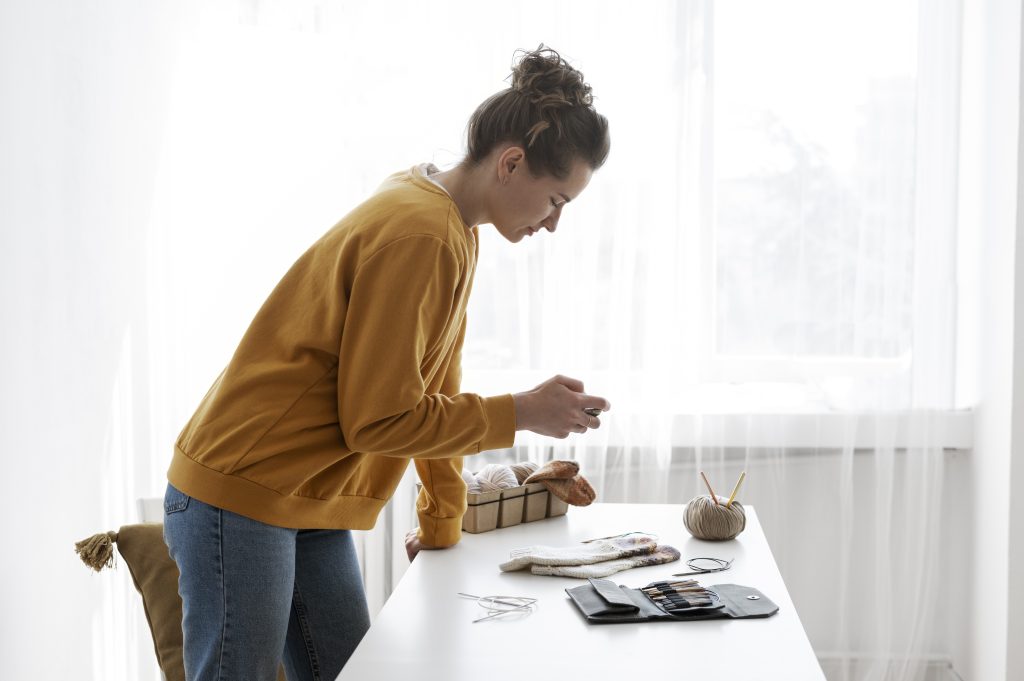How to Organize Your Home Without Feeling Overwhelmed
Jessica White August 12, 2025
The idea of organizing your entire home can feel like a daunting task, particularly if you’ve been putting it off for some time. Whether you’re staring at a cluttered living room, a disorganized kitchen, or an overstuffed closet, the thought of organizing can be overwhelming. However, it’s important to remember that organizing doesn’t have to be stressful. By breaking down the process into manageable steps and focusing on one task at a time, you can turn chaos into calm.
In this guide, we’ll explore proven methods to help you organize your home without feeling overwhelmed. Whether you’re looking to organize just one room or your entire house, you’ll find practical, easy-to-follow tips that will make the process feel less intimidating and more rewarding.

1. Start with a Plan
The first step to avoiding overwhelm is to create a plan. Jumping straight into the process without thinking it through can easily lead to frustration. Start by identifying which areas of your home need attention. Instead of focusing on the entire house, consider beginning with a single room, a closet, or even a smaller area, like your entryway.
Creating a plan helps you stay focused and keeps the task at hand from becoming too large to handle. Here’s how to go about it:
- Pick a space: Choose a room or area where you feel comfortable starting. Often, beginning with a smaller space like the kitchen counter or bathroom can give you an immediate sense of accomplishment.
- Set clear goals: Break the process down into specific tasks. For example, in your living room, your goals might include organizing books, sorting through clutter, and arranging furniture.
- Be flexible: If you find yourself feeling frustrated or tired, it’s okay to take a break and come back later. It’s important to stay positive and not overwhelm yourself in the process.
Pro Tip: Create a checklist for each space. This will make it easier to track progress and ensure you don’t miss any important details.
2. Declutter and Simplify
Eliminate the Unnecessary
One of the key steps to organizing your home without feeling overwhelmed is to declutter. Clutter can make any space feel chaotic and stressful, so eliminating the unnecessary items you no longer use or need is essential.
Decluttering not only creates a cleaner and more organized space but also helps clear your mind. Here’s how to get started:
Step-by-Step Decluttering Guide:
- Choose a category: Start with something easy, like clothes or books. By focusing on one category at a time, you’ll prevent the task from feeling too big.
- The three-box method: Grab three boxes or bags and label them: “Keep,” “Donate,” and “Discard.” Start sorting through each item and place it in one of the three boxes. If it no longer serves you, put it in the “Discard” or “Donate” pile.
- Don’t rush: Give yourself time to evaluate each item. If it brings no joy or use, let it go. If you’re unsure, place it in a “Maybe” pile and revisit it later.
Decluttering can be a liberating experience. You’ll find that once you remove the excess, the task of organizing becomes much easier.
3. Use Organizational Tools and Storage Solutions
After decluttering, the next step is to properly organize the items you’re keeping. This is where storage solutions come in. To maintain an organized home, you’ll need functional storage options that make it easy to access your belongings while keeping them tidy.
Here are some organizational tools to consider:
- Bins and baskets: For storing toys, extra linens, or bathroom products, bins and baskets are perfect. Use clear or labeled containers to make it easy to locate items.
- Shelving units: Shelves help you store items vertically, freeing up floor space. You can install floating shelves in the kitchen, bathroom, or living room to keep things organized.
- Drawer dividers: Keep your drawers neat and tidy with dividers. They’re perfect for organizing cutlery, office supplies, or personal items.
- Under-bed storage: Don’t overlook the space under your bed! Under-bed storage bins are great for seasonal items or anything you don’t use frequently.
By making use of these tools, you can create a home that feels organized and spacious. The key is to keep things accessible and categorized, so you’re not overwhelmed by misplaced or forgotten items.
4. Adopt the One-In, One-Out Rule
To maintain your organized space and prevent new clutter from building up, adopt the “One-In, One-Out” rule. This simple yet effective strategy means that every time you bring a new item into your home, you commit to removing one. By doing this, you keep your possessions at a manageable level and avoid accumulating unnecessary items.
For example, if you buy a new jacket, consider donating an old one. If you purchase new kitchen gadgets, get rid of ones you no longer use.
This rule encourages mindful shopping and prevents your home from becoming cluttered again. It also ensures that you’re only keeping things that add value to your life.
5. Set Realistic Expectations
A common pitfall when organizing is setting unrealistic expectations. If you expect your home to be organized in a day, you’ll likely become frustrated when things don’t go as planned. The reality is that organizing a home takes time, especially if you’re working with a lot of items.
Here are some tips to manage your expectations:
- Start small: If the idea of tackling the entire house feels overwhelming, begin with one room or even a small area. Small wins build momentum.
- Take breaks: Don’t try to do everything in one sitting. If you find yourself getting tired or frustrated, take a break and come back when you feel refreshed.
- Celebrate progress: Even if you’ve only completed one task or room, celebrate your accomplishments. Organizing is a journey, and every step forward is a success.
Remember, organizing is a marathon, not a sprint. Pace yourself and enjoy the process as you go.
6. Maintain Your Organized Space
Now that you’ve successfully organized your home, it’s essential to maintain it. The last thing you want is to go through all the effort only to have your space revert back to its cluttered state.
Here are a few daily habits to keep things in order:
- Spend 10-15 minutes daily: Do a quick sweep of your home every day. Put items back in their designated places and wipe down surfaces.
- Put things back immediately: The key to avoiding clutter is to put things away as soon as you’re done using them. Don’t leave items lying around.
- Enlist help: If you live with others, encourage everyone to maintain the organization. A clean and organized home is a shared responsibility.
By committing to small daily routines, you’ll ensure that your home remains neat and clutter-free.
Conclusion
Organizing your home doesn’t need to be an overwhelming task. By breaking the process down into manageable steps, decluttering, using efficient storage solutions, and setting realistic expectations, you can create a space that feels organized and calm. Don’t be afraid to take your time and celebrate each milestone, no matter how small. Soon enough, you’ll find yourself enjoying the benefits of a clutter-free home.
References
- Brooks, S. (2021). How to Organize Your Home Without Feeling Overwhelmed. Better Homes and Gardens. Available at: https://www.bhg.com (Accessed: 12 August 2025).
- Jones, M. (2022). Simplifying Your Home: A Step-by-Step Guide to Decluttering. The Spruce. Available at: https://www.thespruce.com (Accessed: 12 August 2025).
- Thomas, A. (2020). 10 Simple Ways to Organize Your Space and Feel Less Stressed. Real Simple. Available at: https://www.realsimple.com (Accessed: 12 August 2025).







